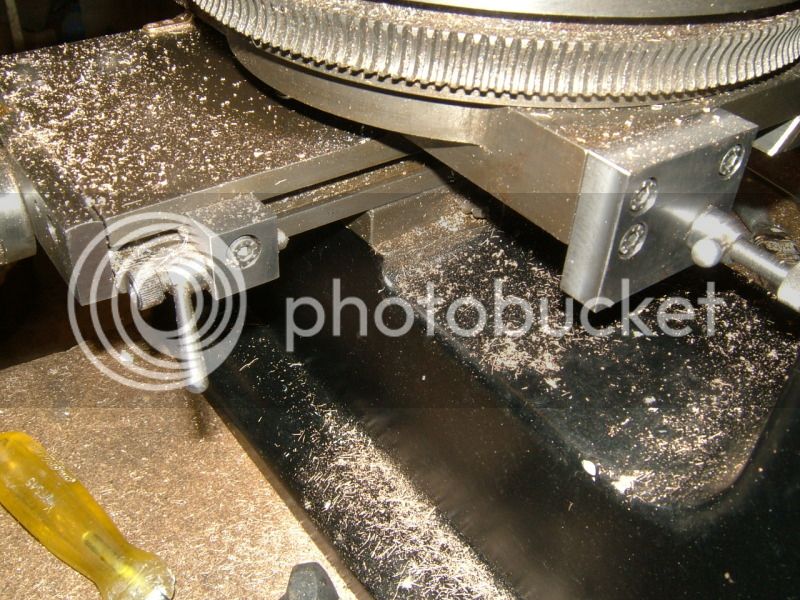- Joined
- Aug 25, 2007
- Messages
- 3,890
- Reaction score
- 715
I have recently come to really appreciate adjustable stops on my milling table.

Some months back I installed the Igaging DRO's on my mill/drill, but they just aren't built well enough. I won't go into the why, but my setup only lasted about a month then quit working. Plus, the readouts are too hard to read. And, stopping the movement of the table at an exact reading is difficult and stressful.
So, I removed the DRO's. I had made the two aluminum blocks in the picture, plus new brass dovetail nuts behind them to hold the Igaging scale. I discovered after removing the scale, that the new nuts and aluminum blocks made a very secure stop, much more secure than the ones which came on the mill/drill originally. So, I've been using these a lot, especially with my V8 engine which requires a lot of repetitive cuts. I used the stops, also, for example, when making the 1/8" wide slot in the bottom of the piston. I find the stops are much better than a DRO for these applications because you don't have to watch for anything... you just stop cranking when the table stops moving. It is also, in my case, much more repeatable. And, it's a heck of a lot cheaper than a good set of DRO's.
DRO's are certainly good for a lot of other things. But for simple repetitive milling operations, stops are hard to beat. Now I have figure out how to install some stops on my Y-Axis.
Chuck

Some months back I installed the Igaging DRO's on my mill/drill, but they just aren't built well enough. I won't go into the why, but my setup only lasted about a month then quit working. Plus, the readouts are too hard to read. And, stopping the movement of the table at an exact reading is difficult and stressful.
So, I removed the DRO's. I had made the two aluminum blocks in the picture, plus new brass dovetail nuts behind them to hold the Igaging scale. I discovered after removing the scale, that the new nuts and aluminum blocks made a very secure stop, much more secure than the ones which came on the mill/drill originally. So, I've been using these a lot, especially with my V8 engine which requires a lot of repetitive cuts. I used the stops, also, for example, when making the 1/8" wide slot in the bottom of the piston. I find the stops are much better than a DRO for these applications because you don't have to watch for anything... you just stop cranking when the table stops moving. It is also, in my case, much more repeatable. And, it's a heck of a lot cheaper than a good set of DRO's.
DRO's are certainly good for a lot of other things. But for simple repetitive milling operations, stops are hard to beat. Now I have figure out how to install some stops on my Y-Axis.
Chuck










































































